Guatemala
Although in 2021 the United States Congress issued a decree that prohibited the delivery of funds to the armies of Guatemala, El Salvador and Honduras until there were improvements in the fight against corruption, the Department of Defense used a pretext to circumvent that decision to use unrestricted funds.
The donation of J8 military vehicles that the United States delivered to the Guatemalan government to combat drug trafficking were actually used to provide perimeter protection to private security agents who burned peasant houses in El Estor, Izabal, in 2021. This donation was booked in the Foreign Military Financing (FMF) program, which is the largest military assistance program approved by Congress. Likewise, in 2018, the government of Jimmy Morales used these vehicles to intimidate the United States embassy itself and the International Commission against Impunity in Guatemala (CICIG) that emerged from an agreement between the UN and the country’s authorities.
A few years later, the United States Congress limited vehicle donations to the Guatemalan military, given the history of their use. During the current government of Alejandro Giammattei, nine Democratic congressmen asked the Biden government for explanations, but the response was silence in the face of the decision of the United States armed forces to strengthen the Guatemalan army.
In this context, on October 13, the United States embassy in Guatemala City announced the donation of 95 vehicles, including trucks, vans, and motorcycles, valued at US$4.4 million. According to the Prensa Comunitaria portal, the origin of this money is a budget item from the Department of Defense (DOD) approved in 2019, during the administration of former President Donald Trump.
In a comment, researcher Adam Isacson on the website of the Washington Office on Latin America (WOLA) assures that “the donation was financed through a DOD foreign military capacity building authority established in 2017 as Section 333 of Title 10 of the United States Code”.
A report from the Congressional Research Service (CRS) dated March 2022 makes it known that “The operating budget for fiscal year 2021 prohibits aid to Guatemala, El Salvador and Honduras, while conditioning 50% of other security-related State Department appropriations for these countries, for their governments to combat corruption, protect human rights, and address other concerns of Congress.”
Isacson claimed that “a DOD program was being used to provide a category of aid that Guatemala cannot receive through the State Department’s main military aid program,” because an alternative budget was used to finance the Guatemalan military, bypassing limitations set by Congress that the DOD dismissed and disregarded.
Panama
In October of last year, General Richardson arrived in Panama on her second trip to the country in less than 5 months. On this occasion, the reason for the visit was to hold a “bilateral meeting on security.” On her first trip of the year, in June, the Head of the Southern Command discussed issues related to security and the regional migration crisis with the Panamanian authorities. Likewise, he participated in the High Level Security Dialogue (DSAN) between Panama and the United States that was held in that country.
The migration problem occupied a central place in the deliberations when Panama was facing a crisis in this matter. In the context, just a few days before, a new policy had come into force in the United States that legalized the expulsion of Venezuelan nationals who tried to enter through the land border with Mexico or who had arrived irregularly via Panama.
On this matter, the director of the National Migration Service (SNM) of Panama, Samira Gozaine reported that they were “calling on the United States Embassy to help us, to assist us financially as they do with other countries. For the United States, the migratory crisis generated by its own policies has become a great opportunity for “legal” intervention and interference in the internal affairs of the countries of the region.
Brazil
During a visit to Brazil in September last year, General Richardson stated that there was a “sketch” of a joint military force between her country and Brazil with helicopters to – presumably – fight fires in the Amazon jungle.
According to Uruguayan analyst Luis Vignolo, “the information went largely unnoticed, perhaps not by chance, while the mainstream media looked in other directions.” But the truth is that there were strong rapprochements in the military sphere between the two countries during the government of Jair Bolsonaro. Three months earlier, during the IX Summit of the Americas, held in Los Angeles, California, between June 6 and 10, Brazil and the United States announced a bilateral rapid response group to combat deforestation in the Brazilian Amazon, for which a high-level working group made up of authorities from both countries was created.
As background, in August 2019, Donald Trump had designated Brazil as a “preferential non-NATO ally of the United States” with the approval of Bolsonaro and his vice president, retired General Hamilton Mourão. According to Vignolo, “Mourão made reference in this context to the role of the Brazilian Armed Forces as a guarantee against the seizure of power by those he considers enemies, in what could be considered a warning against opposition to the right-wing government.”
The violent eruption of fascist gangs a few days after Lula’s inauguration -as had happened two years earlier in Washington with the prominence of Trump’s followers- and the attitude of the armed forces towards the event, seemed to mark the pattern of what would be the behavior of the military in the performance of Lula’s presidential functions, generating a threat accepted by the most reactionary sectors of the US establishment and by important sectors of its armed forces that consider their Brazilian counterparts as important allies for the strategic control of the region.
Lula will have to face US and European interests in the Amazon, especially now that his “slide” towards positions of the center has made him get closer to the Democratic party that controls the administration in the United States and the European social democracy. The latter governs in countries like Germany and Spain with whom it has established privileged ties that could facilitate the approach of its armed forces to Brazil for a supposed “sustainable management” of the Amazon. In fact, Lula has already invited them to “invest” in ecologically sustainable projects in the region and has assured that this will be done respecting Brazilian sovereignty. However, there are not many details about it.
The well-informed analyst and writer Andrew Korybko, who has done extensive research on “hybrid wars,” has warned that “a fraction of the PT could be used by the United States for its interventionist purposes.” He has also expressed his opinion that the US intervention in Brazil will not cease under the new Lula government, but it will change its form, assuming a type of “radical destabilization” to give NATO pretexts to intervene and “save” to a politically handcuffed Lula”.
Korybko believes that “all the elements for a total destabilization of Brazil are in place, taking into account the structural problems of the economy, the scant parliamentary weight of the ruling party and the serious polarization in the street between supporters of Bolsonaro and supporters of Lula.”.
Bolivia
The secessionist plan in Bolivia is an old one. It had a moment of realization after the US-backed coup against President Evo Morales in 2019 and has recently re-emerged in the form of a violent “civic strike” organized by a fascist paramilitary group from the department of Santa Cruz that is part of the Bolivian Amazon that constitutes 43% of the national territory.
The main operator of US policy against Bolivia has been Mark Falcoff, the Bush administration’s advisor for Latin America. In his article “The last days of Bolivia?”, published in American Outlook in May 2004, Falcoff “predicted” Bolivia’s ethnic division after the wave of popular uprisings that led to the overthrow of President Sánchez de Lozada in 2003.
In his article, Falcoff points out that: “…it is a fundamental fact about Bolivia, to know that it is a society divided along two great fault lines: race and geography”. Falcoff contrasts the situation in “Andean Bolivia, poor, with coca crops to manufacture drugs, violent, underdeveloped and rebellious with the prosperous Santa Cruz, which, generating 51% of the country’s income, only received ‘a small percentage’ of the profits generated by oil and gas”.
For this reason, Falcoff recommended a new Constitution that should “remedy the need to decentralize authority and resources” accompanied by “a true attempt at a federal solution, with a regional redistribution of resources and a rational energy policy”
The plan that led to the coup against Evo Morales and the recent fascist attempt to repeat this event were inserted into this logic, although now operational modifications have been made without changing the objective of overthrowing the government. In the Pentagon’s sights is – as General Richardson has openly made known – the gigantic lithium deposits that are not found in the Amazon area of the country, but in the Andean highlands. The exploitation and subsequent industrialization of lithium by non-US foreign companies arouse concern in Washington, which does not give up its intentions to destabilize the country.
Peru
On January 18, 2023, the President of Peru, Dina Boluarte, and Prime Minister Alberto Otárola sent a letter to José Daniel Williams, President of the Congress of the Republic, in which they request approval to authorize “the entry of naval units and personnel foreign military with weapons of war within the Republic”. This must be read as the entry of United States military forces at the time of large mobilizations against the government that has overthrown President Pedro Castillo and has usurped power, which has been resisted by important sectors of the population who have been subjected to a strong repression. These actions have had the open and clear support of the embassy and the government of the United States.
Mexico
At the last minute, when I was closing this work in three parts, the information arrived that two representatives of the United States Republican Party, Dan Crenshaw and Michael Waltz, presented a document to the Congress of their country to authorize the Armed Forces to carry out operations against Mexican cartels, without counting on the acceptance of the government of that country.
President Andrés Manuel López Obrador rejected the possibility of the United States deciding “who is good and who is bad” assuming itself as “government of the world”, with the power to intervene by force in any country on the planet.
Conclusions
Finally, it is valid to take into account that the adoption by the United States of its new military concept of “integrated deterrence” in which it manifests supposed “shared values” with Latin America that do not really exist, seeks to incorporate the countries of the region to its global war against China and Russia.
This “integrated deterrence” is a sort of grouping of the resources of the countries of the Americas to combat a supposedly common enemy. Washington calls for “unity” to confront who it has unilaterally defined as an enemy, which is not necessarily the same as that of Latin America and the Caribbean, which should rather bet on neutrality and the search for peace.
The head of the Southern Command expressed it very precisely in Ecuador when she talked of “the advance of China is a problem of national security.” She added that the United States and Latin America and the Caribbean should “work together as a team, playing our respective positions in a harmonious and highly effective way to solve that problem.”
As has been seen, the instruments are varied, the actions manifest different dimensions and characteristics, but all aim to keep the region subject to the strategic control of Washington,
NOTE: This article series has not covered the interventionist actions of the United States in Cuba, Nicaragua and Venezuela, because it has been permanent and continuous for more than 60, 40 and 20 years respectively. Each of them would merit a special report.








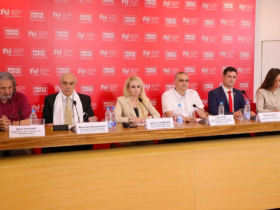
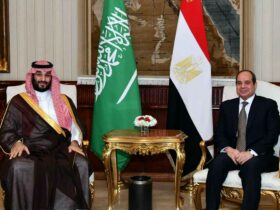
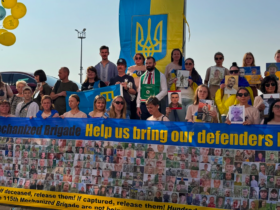
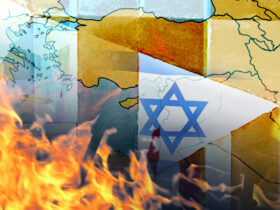
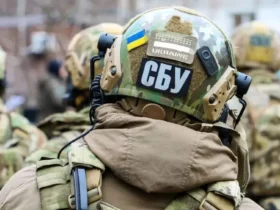
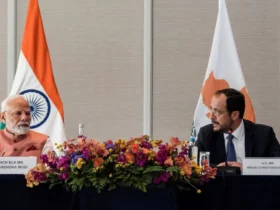
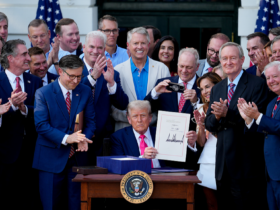
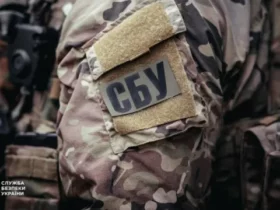

Leave a Reply